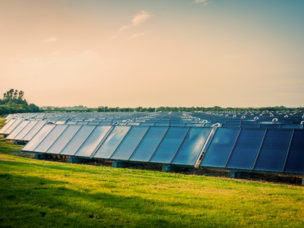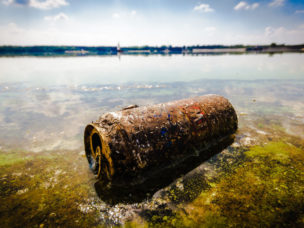Stay in the know
Subscribe to the Real Estate Blog and we’ll send you an email each time something new is posted.
Subscribe to the Real Estate Blog and we’ll send you an email each time something new is posted.
Blogs
Real Estate Blog
Climate Change and Rising Sea Levels: Taking a Local Look at a Global Problem
The Boston Harbor Association recently released a sobering report entitled “Preparing for the Rising Tide” which assesses Boston’s vulnerability to the coastal flooding we are likely to experience as a result of ongoing climate change. Some of the “matter of fact” statements in the report are chilling to read:
- Current climate change evidence indicates that sea levels may rise by up to 2’ in Boston by 2050 and by up to 6’ by 2100.
- “If Superstorm Sandy” had hit Boston at high tide (as it did in New York City), rather than at low tide, up to 6% of Boston would have been flooded that day.
- What is now a “100-year storm surge” is likely, because of increased climate change and rising sea levels, to be merely a “5-year storm surge” by 2050, and may be a daily high tide occurrence by 2100.
The report looks at the impact on the City of Boston of potential flooding at levels either 5’ above current high tide or 7.5’ above current high tide. Although the first of these scenarios would already occur during a “100-year storm” which hits Boston during high tide, this could become a daily high tide event by the year 2100. The second of these scenarios approximates the coastal storm surge which Boston would experience during a “100-year storm” which hits during high tide after sea levels have risen by approximately 2.5’ (as is projected to be the case around 2050). The report concludes:
- In broad terms, in the first of these scenarios (a flood level approx. 5’ above current high tide):
- Almost 7% of the land area of the city would be flooded, with industrial, commercial, and tax-exempt developed properties the hardest hit (in some cases with more than 10% of the total land use class in the city flooded), while residential uses would be least affected. This breakdown is not surprising given the current concentration of industrial and government-owned properties along the waterfront.
- All of the coastal neighborhoods and all of the harbor islands (totaling almost 83 million sf) would be flooded.
- Some of the more significant developed properties anticipated to be flooded under these conditions are the Charlestown Navy Yard, Bayside Expo Center, Gillette plant, South Bay shopping center, and Boston Fish Pier.
- Again in broad terms, in the second of these scenarios (a “100 year storm” hitting Boston during high tide after the sea level rises approx. 2.5’ above today’s level, causing a flood level approx. 7.5’ above current high tide):
- 30% of the entire city would be flooded, with industrial (40%), commercial (40%), and tax-exempt (42%) developed properties the hardest hit, while residential properties would be least affected (<7%).
- In this scenario, almost every neighborhood in the city (except Hyde Park, Jamaica Plain, Mattapan, Roslindale, and West Roxbury) would experience some flooding. Looking at some neighborhood figures, more than 90% of the South End, more than 80% of East Boston, Back Bay and the Fenway, almost 60% or more of South Boston, Chinatown, Charlestown, and the North End, and almost half of downtown Boston would be flooded.
- Some of the more significant developed properties anticipated to be flooded under these conditions (in addition to those listed above) are Logan Airport, the Boston Convention and Exhibition Center, Boston Marine Industrial Park, Harbor Point Apartments, and Harvard Stadium.
The report does not address the impact of such flooding on subsurface structures, such as subway tunnels and utility conduits – which have proven to be some of the most enduring problems left by Sandy in New York City. The report also notes that most storm drain outlets around the city are currently at or only slightly above current high tides, so that it will not take a major rise in sea level or storm surge to cause major backups in these drain lines into otherwise landlocked areas.
Among the most interesting sections of the report are case studies of anticipated flooding and possible preventive measures to be taken with respect to Long and Central Wharves (Marriott Hotel, New England Aquarium, Aquarium MBTA station, Harbor Towers Garage), and UMass Boston. These make for fascinating, and ultimately slightly unsettling, reading. Most property owners in these areas are concerned about the effect of climate change on their holdings, but reading these portions of the report dramatically demonstrates the gulf between how conditions at these locations will change over time and the steps currently being taken to address these changes (largely property-specific flood-proofing with stand-by pumps and sandbags). Clearly, more systematic planning is required, and not just on a property-by-property basis.
The report recounts initiatives undertaken by the City of Boston and the Commonwealth to identify, quantify, and try to address impacts of climate change and associated sea level rise, and contains a number of suggestions and recommendations for further action by both governmental and private parties. With information of the quality contained in this report now publicly available in a concise format, there is no longer any reason to delay taking these steps.



